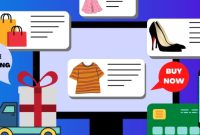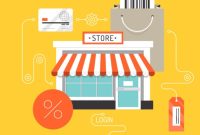Amazon is the world’s largest online retailer and e-commerce company. It offers a vast selection of products from electronics and apparel to home decor and books. In addition to its own products, it also allows third-party retailers to sell their own items on its marketplace platform.
The Amazon Effect: A Consumer Disruption
When Jeff Bezos founded Amazon in 1994, he had an important realization: that the traditional retail industry could no longer serve customers efficiently because it was limited by physical shelf space. With the advent of the internet, Bezos recognized that an online store would have a completely unbounded, infinite shelf space.
This gave Amazon a massive advantage over local retailers, as it did not have to worry about the cost of building or maintaining stores in each region. The result was a new way of operating a company that sped up growth, pushed out smaller competitors, and created more and more profit.
The Amazon Effect: A Consumer Backlash
While some people may see the Amazon Effect as a positive thing that has helped to create an efficient e-commerce system, many others see it as a major threat. Its monopolistic behavior and anticompetitive actions have created a backlash against the company.
The Amazon Effect: A Consumer Demand for Convenience
One of the biggest reasons why customers use Amazon is because it offers fast shipping, low prices, easy returns, and access to customer reviews. In addition, customers like to have their orders delivered directly to their homes or offices.
Fortunately, the company has developed several ways to meet these needs. For instance, it launched Alexa – a voice-controlled virtual assistant that is able to answer questions about products and services based on what the customer has previously purchased from Amazon.
As a result, many consumers now turn to the company for all of their e-commerce needs. From grocery pickup to movie rentals, a variety of popular services have been launched by the company, and the list keeps growing.
Amazon’s Best Sellers (2017)
Using its huge network of sellers, the online retailer has created an endless stream of new products to choose from. It also updates its best-selling items hourly, making it easier than ever to find a product that’s sure to be a hit with your customers.
The Best-Sellers category is a great place to start your business because it’s easy to get started and you can build up a portfolio of products over time. However, you should always do your research to ensure that your business is selling the right things for your audience.
You’ll need to be able to identify the best-selling items and optimize them accordingly. You can do this by doing your own research on product trends, analyzing the performance of your competitors, and even taking inspiration from YouTube videos or blogs that are successful in your niche.
Another way of finding best-selling products is by taking a look at the history of the items. This will give you an idea of what products have performed well in the past, so that you can learn from their success and apply the same strategies to your own business. Lastly, you can use Google Trends to analyze the popularity of specific products and determine which ones are likely to sell the most in the future.



